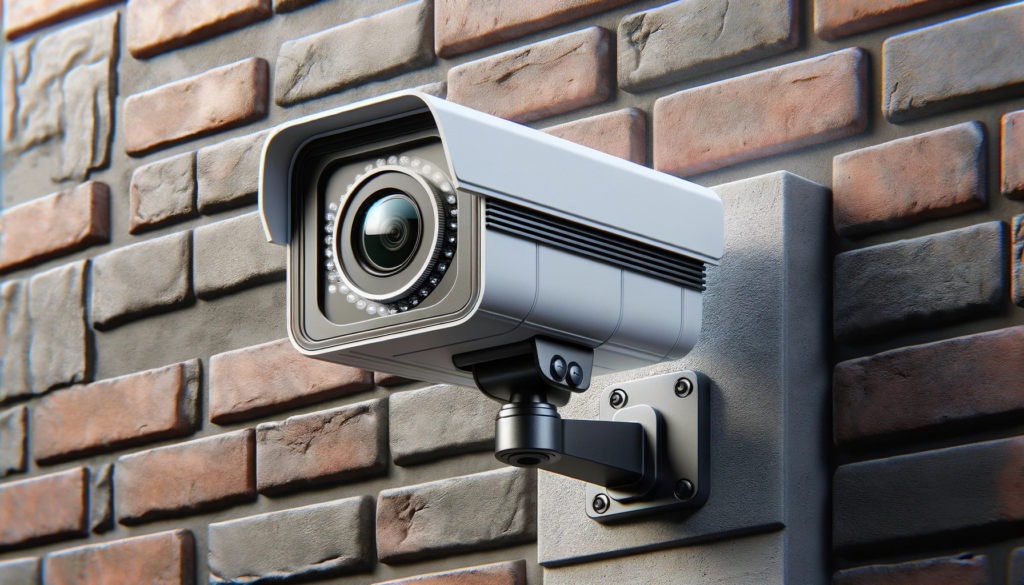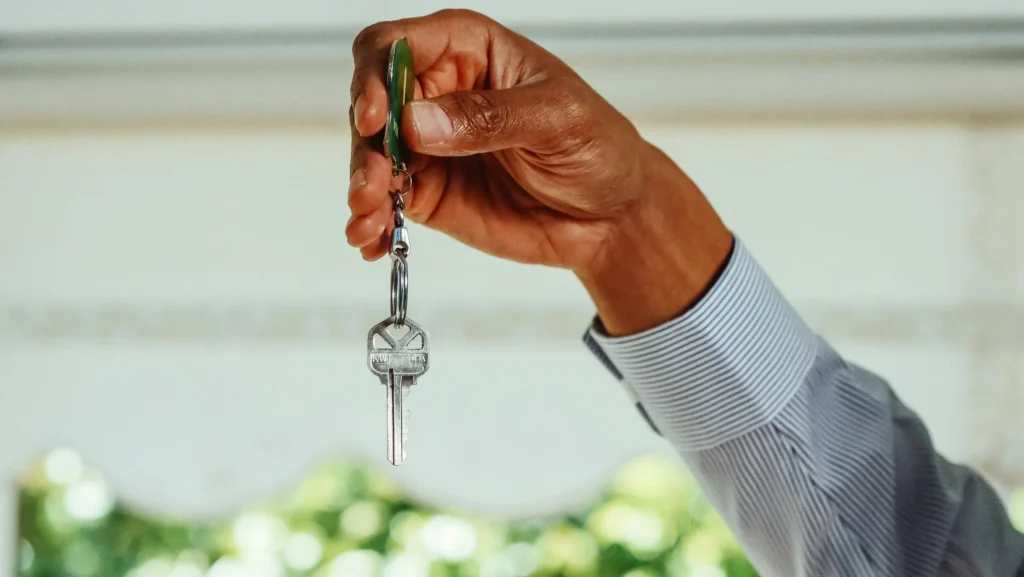Home security has become a high priority for most homeowners. Everyone wants to protect their assets, and more importantly, their families. DIY home security cameras are a practical and cost-effective solution for home protection.
A complete home security system typically includes several fundamental elements:
- Hub/Base Station: The central control unit that connects all components and communicates with monitoring services and your smartphone.
- Entry Sensors: Placed on doors and windows to detect when they’re opened, these sensors form the first line of defense against unauthorized access.
- Motion Detectors: Strategic placement of motion sensors provides additional coverage for high-traffic or vulnerable areas inside your home.
- Keypad: Typically installed near main entry points, keypads allow for easy arming and disarming of the system when entering or leaving.
- Siren: A loud alarm serves both to alert occupants and neighbors and to potentially scare off intruders caught in the act.
- Security Cameras: The visual component that allows for monitoring, verification, and evidence collection.
Camera Types and Optimal Placement
Cameras represent the eyes of your security system, providing crucial visual verification and evidence. Different security cameras serve specific purposes:
Indoor Cameras:
- Best placed in main living areas, entryways, or near valuable items
- Often feature two-way audio for communication
- Typically more affordable than outdoor models
- May include privacy features like automatic shutoff when residents are home
Outdoor Cameras:
- Weatherproof design for durability in all conditions
- Often feature stronger night vision capabilities
- May include spotlights, sirens, or motion-activated features
- Ideally positioned at entry points, driveways, or backyard areas
Video Doorbells:
- Combine security with convenience for monitoring deliveries
- Allow two-way communication with visitors
- Capture package deliveries and potential porch pirates
Specialty Cameras:
- Pan-tilt-zoom cameras for covering large areas with a single device
- Floodlight cameras combining illumination with monitoring
- Baby/pet monitors that integrate with the security ecosystem
Effective camera placement involves considering lines of sight, potential blind spots, lighting conditions, and areas of greatest vulnerability.
Top DIY Home Security Systems with Cameras in 2025
SimpliSafe: Reliability and Ease of Use
SimpliSafe continues to earn accolades for its user-friendly approach to comprehensive home security:
- Above-average camera quality in independent testing
- Strong resistance to hacking attempts
- Flexible monitoring options without long-term contracts
- Simple, intuitive mobile app interface
Ring Alarm: Affordable Integration with Amazon Ecosystem
As an Amazon company, Ring excels in ecosystem integration while maintaining competitive pricing:
- Extensive camera lineup including doorbell, indoor, outdoor, and specialized models
- Seamless integration with Amazon Alexa and other smart home devices
- Affordable professional monitoring at $20/month
- Regular updates and new feature additions
Abode: Smart Home Intelligence
Abode stands out for its exceptional compatibility with various smart home platforms:
- Industry-leading smart home integration capabilities
- Flexible, no-contract monitoring options including a free basic self-monitoring tier
- Affordable equipment including camera options
- Highly customizable automation rules and scenarios
- Compact, attractive hardware design
ADT Self Setup: Brand Heritage with DIY Convenience
The DIY offering from the established ADT brand combines reputation with modern features:
- Integration with Google Nest cameras offering advanced features like facial recognition
- The reassurance of the ADT name and monitoring infrastructure
- Regular security updates and improvements
- Sleek, modern equipment design
Cove: Budget-Friendly Protection
For cost-conscious consumers, Cove offers comprehensive protection without breaking the bank:
- Low equipment and monitoring costs
- No long-term contract requirements despite professional monitoring
- Uses eufy cameras known for good quality and reliability
- Simple, text-message based installation guidance
Specialized Camera-Only Solutions
For users primarily interested in visual monitoring without a full alarm system:
- Blink: Amazon-owned, battery-powered cameras with affordable pricing and long battery life
- Google Nest: Premium cameras with advanced AI features and excellent video quality
- Arlo: Versatile camera lineup with excellent battery options and strong video performance
- Wyze: Budget-friendly cameras with surprising feature sets for the price point
DIY Installation: Step-by-Step Guide
Preparation and Planning
Successful installation begins with thoughtful preparation:
- Take Inventory: Unpack and identify all components, ensuring nothing is missing or damaged.
- Create a Security Plan: Walk through your home identifying:
- All entry points (doors and accessible windows)
- High-value item locations
- Areas with limited visibility or frequent access
- Optimal camera placement locations considering power availability, Wi-Fi strength, and viewing angles
- Gather Tools: While most DIY systems require minimal tools, have on hand:
- Screwdriver (if mounting components permanently)
- Drill (for outdoor cameras or heavier components)
- Ladder (for reaching higher mounting points)
- Cleaning supplies (for surface preparation)
- Measuring tape (for proper positioning)
- Test Wi-Fi Strength: Before installation, check your wireless signal strength in all areas where components will be placed, particularly for cameras which require reliable bandwidth.
Installation Process
With proper planning in place, the installation process typically follows these steps:
- Hub Setup:
- Connect the base station to power
- Follow app instructions to connect to your home network
- Place centrally in your home for optimal wireless reach
- Sensor Installation:
- Install door/window sensors, typically by:
- Cleaning surfaces with alcohol
- Removing adhesive backing
- Aligning magnet and sensor components
- Pressing firmly in place
- Place motion sensors at corners of rooms at manufacturer-recommended heights (usually 6-8 feet)
- Install door/window sensors, typically by:
- Camera Mounting:
- Indoor cameras can often be placed on flat surfaces or mounted with included hardware
- Outdoor cameras typically require:
- Marking mounting holes
- Drilling pilot holes (if mounting to fence or side of house)
- Using anchors for drywall or masonry
- Securing the camera mount
- Adjusting the angle for optimal coverage
- Video doorbells usually replace existing doorbells or can be installed independently with included hardware
- Testing and Pairing:
- Use the mobile app to add and name each component
- Test each sensor’s operation before finalizing placement
- Verify camera views and adjust as needed
- Test system operation in various scenarios (home, away, night)
Monitoring Options: Self vs. Professional
Self-Monitoring: Control and Cost Savings
Self-monitoring puts you in charge of your home’s security:
How it works:
- Receive alerts directly to your smartphone when triggered
- View live camera feeds to verify the situation
- Take appropriate action (call authorities, activate siren, speak through two-way audio)
Advantages:
- Often free or available for minimal monthly fees
- No contracts or commitments
- Complete privacy control
- Immediate personal awareness of situations
Limitations:
- Requires constant connectivity to receive alerts
- Responsibility falls entirely on you to monitor and respond
- No backup if you’re unavailable or miss notifications
- Potential delays in emergency response
Professional Monitoring: Peace of Mind
Professional monitoring provides 24/7 coverage by trained personnel:
How it works:
- Monitoring center receives alerts when your system triggers
- Professionals attempt to verify the emergency (often through cameras or by calling you)
- If verified or unable to reach you, authorities are contacted directly
- Creates a consistent response regardless of your availability
Advantages:
- Round-the-clock coverage regardless of your availability
- Potentially faster emergency response
- May qualify for home insurance discounts
- Reduces personal stress and responsibility
Considerations:
- Monthly subscription costs ($10-$50+ depending on service level)
- Potential for false alarm fees from local authorities
- Some privacy considerations with third-party access
Don’t worry—many DIY systems offer both options, allowing you to switch between self and professional monitoring as needs or budgets change.
Privacy Considerations
Your security system shouldn’t compromise your privacy:
- Data Storage: Understand where your video footage is stored (locally or in the cloud) and for how long
- Access Controls: Review who can access your system and what permissions they have
- Third-Party Sharing: Be aware of how companies may share your data with law enforcement or other entities
- In-Home Privacy: Consider privacy modes that disable indoor recording when family members are home
Making the Right Choice for Your Home
Assessing Your Specific Needs
The ideal system varies based on your unique situation:
Property Considerations:
- Home size and layout
- Number of entry points
- Yard and outdoor areas requiring coverage
- Existing smart home ecosystem
Personal Factors:
- Budget constraints (both upfront and monthly)
- Technical comfort level
- Privacy concerns
- Monitoring preferences
- Length of time in current home (owners vs. renters)
Security Priorities:
- Deterrence vs. evidence collection
- Remote monitoring capabilities
- Integration with other home systems
- Environmental monitoring needs
Budget Planning
Effective security doesn’t necessarily require a large investment:
Entry-Level Protection ($100-$250):
- Basic hub, a few entry sensors, and 1-2 cameras
- Self-monitoring through free app
- Limited but functional coverage
Mid-Range Systems ($250-$500):
- Comprehensive sensor coverage
- Multiple camera types
- Optional professional monitoring
- Some smart home integration
Premium Protection ($500+):
- Complete coverage with redundant components
- Advanced camera features (4K, AI detection)
- Professional monitoring
- Full smart home integration
- Additional environmental monitoring
Most systems allow for gradual expansion, letting you start with basics and add components as budget allows.
Homeowner.org is Here To Help You
Keeping a home security system updated and well-maintained is crucial for its ongoing effectiveness. Regular firmware updates, camera cleaning, and system checks are all part of the maintenance that will ensure your system works reliably.
Our last thought we’ll leave you with is that the best security system is one that you’ll actually use. Choose a solution that balances your security needs with your comfort level, budget constraints, and technical abilities. With the right DIY system in place, you can enjoy the confidence that comes from knowing you’ve taken proactive steps to protect what matters most.
At Homeowner.org, we’re here to guide you along the way in your journey regarding all things related to buying, owning, and loving your home. Check out our site for more today.



